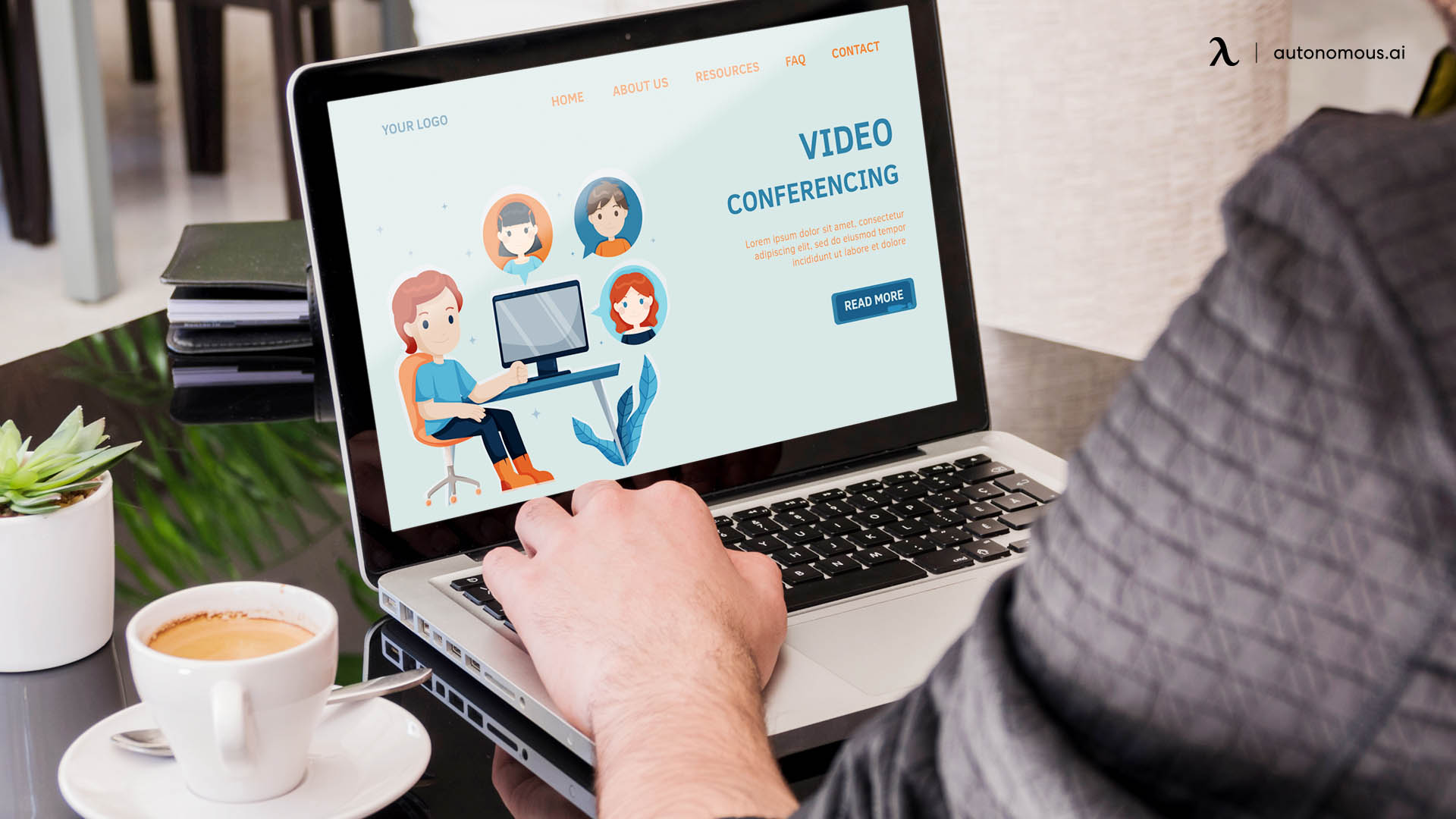/https://storage.googleapis.com/s3-autonomous-upgrade-3/static/upload/images/new_post/understand-the-hybrid-remote-working-model-1776-1619434755459.jpg)
While some companies prefer to stick with the traditional and others branch out into full-on remote, hybrid remote working is still the way most businesses focus on. That way, everyone gets what they want and need, and the team benefits significantly.
What is hybrid remote working? It’s a question many people ask, and it’s got a simple definition. With a hybrid work model, some employees work from home, and others work in the office. There could be specific days where each person works in the office, or they can mix it up the way they see fit.
The Difference between Hybrid Remote Working and Full Remote Working
With a full remote office, there is no company headquarters, and everyone works remotely. This includes executives, managers, and regular employees. Even interviews for new hires are handled online.
A hybrid workforce is a little different. With that, some employees work in an office, and others work remotely. Therefore, there’s a company headquarters, office branches, and more. On top of that, most of the managers may choose to work in the office and talk virtually to remote employees. They can choose to work remotely on some days.

Interviews may be handled virtually or in person. Many companies focus on the initial interview being done through video chat, while the second or third ones are done in person.
In general, the hybrid remote working model focuses on having some people in the office and some elsewhere. The hybrid remote environment is more common right now. It’s easier for established companies to implement it. There are one or more offices where people work physically in the same area, but there are also some that work remotely.
What You Need to Know When Going to a Hybrid Work Model

If you’re hoping to try hybrid remote working, there are various points to consider. Some companies find it impossible or impractical to do an all-remote system. Therefore, the hybrid remote working model is a great alternative. Still, it has to be embraced with intentionality, care, and deliberation. In fact, it can take more effort to get it executed than with an all-remote model because there’s a two-tier work environment. Here are the points to consider:
Only Some Days at the Office

With hybrid remote working, companies should encourage employees to spend at least one day a week in the office. This is beneficial for three reasons:
- Team members may think twice before moving to a location that’s too far away from the office. That way, they can easily commute when needed.
- New hires must still be in the general office area. That limits the talent pool, but it also ensures continuity. No one is going to get upset that they have to come into the office when another person doesn’t.
- It’s easier to make the shift. Everyone has a flexible workspace option, which helps them see the potential and want to make the effort for this plan to work.
No Informal Meetings
Informal meetings, those that are unplanned and unscheduled, can be easier in general but more disruptive for a hybrid remote environment. It all depends on where everyone is working. For example, if someone likes to go to the coffee shop and get going at 11 a.m., they may not be around for a 9 a.m. meeting.
Though you may feel it’s an efficient use of time to stop someone in the hallway for a few moments, it can create disruption for them. They’re already pressed and doing something else, and now you’re asking them to shift focus.

The same applies to remote workers who can work from anywhere.
In short, most companies have done away with the informal meeting scenario because it’s inefficient. Therefore, make it a point to schedule meetings every day or whenever you want to hold them. Just don’t expect people to stop what they’re doing and focus on something else. It slows productivity, and it doesn’t create a great hybrid remote working model.
Redesigned Spaces for Meeting Rooms
Many people find that going to a hybrid remote environment isn’t easy. At home, they have a specific area to work in and designate that for themselves. They can get away from whatever’s going on in the rest of the house.
Companies should redesign the office to help promote more individual meeting rooms and workspaces. That way, remote working is reinforced. In a sense, employees can work remotely from the office.

Eliminate the conference room to ensure that collaboration is available to everyone. There’s no temptation to have the in-office team gather for a meeting without everyone else being present.
Leaders probably want to have a few large spaces available because there could be a time where everyone works at the office. This can be for team bonding ideas and fiscal year planning. That way, there’s room for everyone without disrupting daily work life.
Upfront Agendas
It’s imperative to make sure that each meeting has a specific agenda. If you’re holding it in-office, you can choose to send a document to those who couldn’t be there because they were working remotely. Everyone can contribute, regardless of where they are. In some cases, they may not even be awake during the time of the meeting.
No one should be punished for not making it into the office for a meeting. Instead, you should welcome the diversity and let them read the notes or choose to be present through video conferencing calls.
Record Conversations

Hybrid remote working can’t be successful if no one outside the office knows what conversations are floating about. While you don’t want to give in to gossip, there’s no reason why short snippets of watercooler talk can’t be recorded and shared publicly with the team. That way, takeaways are transparently shared, and there are fewer misinterpretations. If it’s important, and it’s not confidential, record it and let everyone hear it!
Social Events
With hybrid remote working, it’s often impossible to plan social events. Those working at home may long for a social gathering in an office setting. That’s why it’s important to structure informal communication. You can also repurpose the office space to have large gatherings or groups periodically. That way, those who are in the office can get together, and those who may need that interaction can visit the office to get it.

Other options can include game rooms, fitness centers, and libraries. Encourage people to come to the office periodically and use the onsite features to facilitate social gathering. It creates a more productive work environment.
You can also plan social events on particular days. Just make sure that remote workers get paid for the traveling time. Also, make it an after-work affair so that work doesn’t happen in any social rooms. That can create dysfunction and prevent transparency as people congregate in smaller groups, and everyone can’t be privy to the work-related discussion.
Expect Slow Results
While you’re bound to have some who love the hybrid remote working model, others are going to take time to adjust. Be patient and expect the results to be slow at first. For example, immediately after you go to hybrid remote working, you are sure to see more office utilization at the beginning of the transition.
People are going to flock to the office because it’s familiar and may take time to request a remote workday.
Another thing to watch out for is that you may notice that people relocate with time, and you have more unused space. It’s jarring at first, but it positively indicates that the culture and work are progressing without an office being required. This creates more opportunities to repurpose those areas for internship centers or to downsize the office and spend less on leases.
Advantages of Hybrid Remote Working
There are many advantages of having a flexible working model, and many of them are unique to the hybrid remote environment. These include:
1. Better Work Relationships and Collaboration

When employees need human interaction, they can work at the office. However, they can also get in touch with people through virtual means. In a sense, they get both in-person collaboration and can build relationships while sometimes working at home to save money and be with their families more when necessary.
2. Improved Work-Life Balance

The hybrid remote working model is perfect for improving work-life balance. When people get tired of the office setting, they can work from home. The opposite is also true. Employees are allowed to decide what works best for them and when. They can take off a few hours to go to the doctor or take the kids to school and can stay on top of their daily lives, so they’re more focused when working.
3. More Productivity

With more flexibility and less absenteeism, there’s more productivity. If someone has a cold and doesn’t want to get anyone else sick, they may still feel good enough to work. Now, they can with hybrid remote working.
4. More Talent Pools
You want to hire locally to show that you’re part of your community and invested in it. However, it limits the talent you have at your disposal. With a hybrid remote working model, you can actually hire some people as full-time remote employees. That way, you get what they have to offer without the risk of them not wanting to come to the office. However, one issue with that could be that the others may be disgruntled because they do have to work at the office at times. Still, you must remind those employees that they can work at home anytime they want or need to.
5. Improved Trust between Employer and Employee
Employees have to trust their employers and managers. With a hybrid remote working model, your employees can show you how productive they can be when working at home. This also improves staff loyalty because employees are empowered to do their tasks on their own terms. They’re not micromanaged by their supervisors, so they have more freedom to balance a person and work life.
6. More Visibility on Performance

Employee performance is essential to the organization’s success. Managers can find flaws and correct them and play on the employee’s strengths. Hybrid working typically uses various technology and collaboration platforms. Through them, managers can view employee activity and get an idea of what employees are doing and how long it takes.
That way, it’s possible to address employees who aren’t performing well while rewarding those who do. For example, if an employee can remain productive while working their own schedule at home, they can continue with that flexibility and freedom. If someone is struggling to finish their responsibilities, the manager can talk to them about performance factors and adjust the schedule to be put in the office more frequently.
Disadvantages of the Hybrid Remote Environment
With all that being said, the hybrid remote environment isn’t perfect. Here are a few of the downsides you may encounter:
1. Less Accessible Information

Unless the managers document every single thing, employees often have less information to handle their daily responsibilities. There can also be issues with incomplete information given. With time, that can cause frustration, confusion, and more mistakes.
2. Fewer Opportunities for Development

The hybrid remote working model may mean that employees who often work remotely are passed over for advancement, development, and promotion opportunities.
3. Guilt
Many remote workers feel guilty if they always work remotely and rarely go to the office. Therefore, they may grudgingly go in and feel even worse. Make sure that everyone knows that remote working is acceptable and that it can be done every day or on certain days. As long as you establish protocols and policies, guilt shouldn’t be an issue.
Conclusion
Being part of the future means trying new things. If you want your employees to be happy and improve employee engagement, you’re likely going to go to a hybrid remote working model. That way, people can choose what works best for them so that they’re productive and remain loyal.
While it might be hard to switch to hybrid remote learning, it’s not impossible. It just means focusing on what employees and managers need and how to make it happen.
Subscribe for a 10% discount on your first order.
Sign up for our weekly update and be the first to know about our specials & promotions.


/https://storage.googleapis.com/s3-autonomous-upgrade-3/production/ecm/240417/april-10-off-offer-2024-1920x540-CTA.jpg)
/https://storage.googleapis.com/s3-autonomous-upgrade-3/production/ecm/240417/april-10-off-offer-2024-720x1200-CTA.jpg)
/https://storage.googleapis.com/s3-autonomous-upgrade-3/production/ecm/240415/bulk-order-apr-2024-offer-720x1200-CTA-min.jpg)

/https://storage.googleapis.com/s3-autonomous-upgrade-3/static/upload/images/new_post_author/admin-1.png)